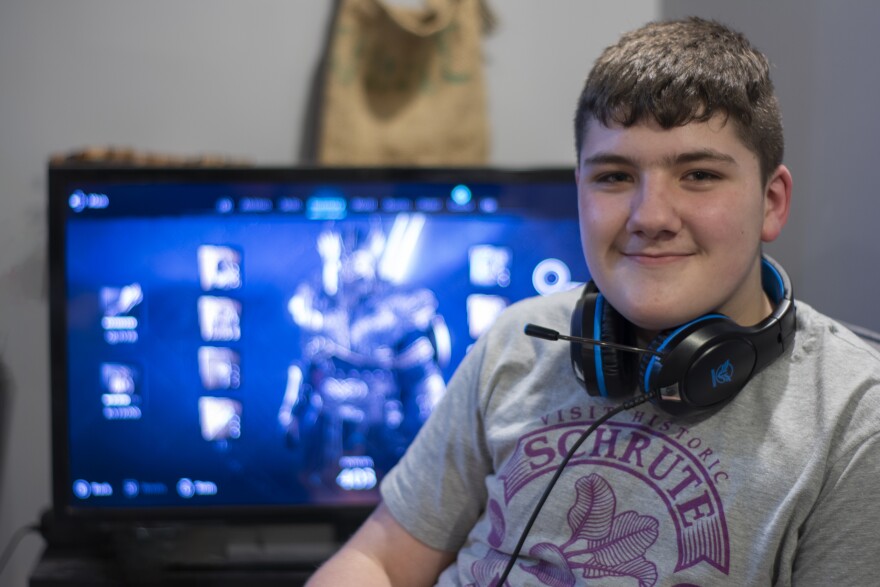With one year into the pandemic, many people's lives have been shifted. One of those people being 13 year-old Jayson Rowe. He's had to adjust to a whole new world of remote learning as a middle schooler with ADD.
“I feel a bit more prepared for real life and how things like this can just happen, but it hasn't really changed me and who I am that much,” Rowe said.
The disruption of normalcy that came with March of 2020 affected everyone differently. Jayson Rowe, 13 years-old, was one of many kids in America who thought COVID-19 would be a momentary inconvenience.
“I was mainly worried whenever it started about the fact that no one seemed to know anything that was solid fact, cause I would hear from some people that it killed everyone it got in contact to. From other people, it was like it’s even smaller than the cold. You would also hear, ‘it's going to be a six-week lockdown,’ he said.
But it wasn’t a six-week lockdown. Instead, it was an abrupt transition from daily classroom instruction to remote learning. This transition would prove more difficult for Jayson than he expected.
“I have ADD which stands for attention deficit disorder, which means that it's a lot harder for me to focus on things, and I zone out a lot during class which makes it harder for me to focus and actually learn.”
“At school, you don't really have a lot of things that distract you when compared to your own house. Like at school, I would just try my best to focus on, like, the class and the subject - but at home it was like everything around me was distracting, because home means fun stuff, board games, Xbox - all that jazz,” he said.

Adjusting to a new learning setting can come with many obstacles, Jayson explained what he found to be the hardest part of online learning.
“The hardest part was... whenever you were in actual school, they would hand you a paper or something for homework, and you would know because you would actually have the thing with you for the entire day. But online, they would only mention it like once or twice that it was due the next day and if you missed that, like you zoned out or something, you wouldn’t have that paper to remind you later. You would just completely forget.”
For middle school kids, they are at a disadvantage. They can’t work. They can't drive. Some don’t have cell phones. So what about his friends? Jayson thrives on daily social interaction. How did he maintain his relationships in isolation? How did he stay in contact with those he used to see on a daily basis?
“We hadn't really thought about giving each other our contact information since we saw each other for most of the day. That's normally something that, at least in my experience, you would do on, like, the last day of school. But we just kind of forgot to do it before the pandemic, so the only friends I really had contact with were the ones on Xbox that I could play games with,” he said.
Now, one year since the start of social distancing, Jayson reflects on the time he isolated at home. He shared how he kept busy in his home.
“I had chores, a lot of them. But once I was done with those, and since I only had two periods a day for remote, I would play Xbox or other things, like build Legos. I had a lot of things to keep me busy.”
Though this past year has been difficult for Jayson, he is working towards improving his grades and school experience by implementing new strategies to maintain his focus and better his learning. He is more prepared for life, but the pandemic has not swayed him from staying true to himself.



